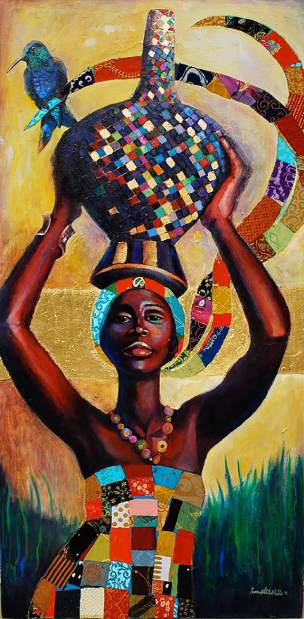Art review: Gianna Paniagua and Tamara Natalie Madden at Penn Galleries
Two exhibits on display at the Pittsburgh Cultural Trust's 707 and 709 Penn Galleries, Downtown, exemplify the notion of physical and mental healing through art.
At 707 Penn Gallery, Gianna Paniagua's “Vascular Caverns” installation is a tour de force of delicate paper-cut patterns that the viewer can walk through that reference the vascular system.
A native of Cuba, Paniagua became a heart transplant recipient in 1992 at Columbia Presbyterian Babies Hospital. The experience has shaped her life and, in turn, her work.
Her experiences pushed her to view the body as a collection of patterns that are extremely fragile. Her medical situation requires a lifelong plan of daily and annual routines for her body to function properly.
Her work is centered on themes concerning dualities of the body: strength versus fragility, growth versus decay and unique versus patterned.
“In my cutouts, I place an emphasis on the physical, delicate nature of the body and, conversely, its abilities for healing,” she says.
Mimicking her life, Paniagua says ritual and repetition played a key role in creating this installation and that the process itself was “meditative.”
“Essentially, this interaction with the paper began as a way for my mind to escape the physical stresses and frustrations that were associated with my health,” Paniagua says. “Instead, I placed focus on creating my own patterns on paper that can take shape and grow into the space.”
At the 709 Gallery, the work of Jamaican artist Tamara Natalie Madden, in her solo exhibit “Out of Many, One People,” also grew from a medical condition: a kidney transplant.
Madden was born in Jamaica and spent her teenage years in Madison, Wis. In 1997, she was diagnosed with a rare genetic kidney disease called IgA nephropathy. Over the next few years, she would watch her body deteriorate while she tried to cope amid the toxins collecting in her body.
While living on a dialysis machine, Madden turned to creating art, something she loved to do as a child, in order to maintain some semblance of normalcy.
In 2000, Madden returned to Jamaica in hopes of reuniting with family and finding a long-lost brother. She had no idea the trip would save her life. Upon seeing the condition she was in, her brother offered one of his kidneys to her.
“A man I had not known my whole life looked at me and offered me a kidney,” Madden recalls. “I said, ‘Are you kidding? This is a joke, right?' He ended up being a perfect match. He came to America and donated a kidney to me in 2001.”
That year, Madden participated in her first art exhibition, making good on the promise that she had made to herself long ago to become a professional fine artist.
In the gallery, the two-dozen paintings by Madden are based on her memories of the people of her native Jamaica. In each, she has placed them in beautiful fabrics (raw silks, colorful satins) that mimic those worn by royalty. The fabrics are laminated on top of the paintings.
“I started using fabrics because I was interested in quilting,” Madden says. “The history of quilting in Jamaica is connected to telling stories and maintaining family connections.”
Madden says she also started to see using the fabric as a way to heighten the social status of her subjects, “because it is a way of taking a regular person and putting them in a position of making them feel important or valuable,” she says. “It helps to guide people's perception of us. Clothing is a way of telling the story of a person's intrinsic beauty.”
Madden says utilizing fabric this way “alludes to a person's history, as well as heightens their status.”
For example, with “Water Carrier,” fabric forms the subject's dress as well as the water jug on top of her head.
“You can find a water carrier anywhere in Jamaica,” Madden says. “It's a very mundane task that people around the world have to do. People in America don't think about it, but many women in the world carry water and other things on their head. And so, when we think of these people, we think of them performing a daily function. We overlook it, and we don't care. By adding elements of gold and pieces of fabric to things that are really everyday items, it's almost like the bottle becomes a crown. And that crown says, ‘I am somebody despite of what everybody thinks. I am important.' ”
“Sultan,” a painting of a man in full regalia, is a real standout. “I really enjoyed working on that piece because of the intricacy of it,” Madden says. “I also liked that I was able to focus my ability on painting the body, because I primarily focus on the faces.”
Finally, Madden says “Out of Many” is a meaningful piece to her because it conveys what the show is about.
“Jamaica is a very interesting country because it has an interesting racial makeup,” Madden says. “A lot of people have this idea that Jamaicans all have dreadlocks and dark skin. But Jamaicans are a multiracial people. My mom was very fair, and I came out dark. So, I wanted to express that in the painting.”
Kurt Shaw is the art critic for Trib Total Media. He can be reached at kshaw@tribweb.com.




